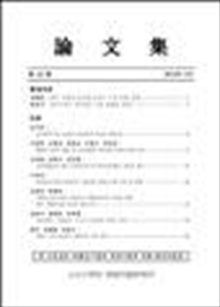간행물
大田大學校 環境問題硏究所 論文集 대전대학교 환경문제연구소 논문집 Journal of The Institute of Environmental Studies

- 발행기관 대전대학교 환경문제연구소
- 자료유형 학술지
- 간기 연간
- ISSN 2287-1527 (Print)
- 수록기간 1996 ~ 2016
- 주제분류 공학 > 환경공학 공학 분류의 다른 간행물
- 십진분류KDC 539DDC 628
권호리스트/논문검색
제13호 (2009년 2월) 7건
환경자료
1.
2009.02
구독 인증기관 무료, 개인회원 유료
5,500원
2.
2009.02
구독 인증기관 무료, 개인회원 유료
4,000원
3.
2009.02
구독 인증기관 무료, 개인회원 유료
Total water pollution load management(TWPLM) seeks to harmonize conservation and development by allowing regional developments to be carried out in an eco-friendly manner and within the scope of achieving the desirable water quality. Water pollutant sources are managed so as to keep the total amount of pollutants in public watersheds within a certain level or total allowance in accordance with target water quality goal. With relation to the basic guideline under the Special Act on the Water Resources Management and Community Support for Watersheds, the load from the land should be determined by the classification of rainy and dried season respectively. Objective loads of abatement applied in the 1st planning period(2004∼2010) are set up standards by low flow condition(Q275) without considering the change of flow, while allowable wasteloads are estimated by the criteria of daily mean precipitation 10 mm, as critical standard for the division of surface runoff load. Even though the standard flow conditions to meet the goal of water quality at the end of unit watershed are low flow, but it might be considered to set up drought flow condition(Q355) for the improvement of water quality. Also the objective loads for abatement to meet the target water quality should be calculated without the effect of non-point sources from the land.
4,000원
4.
2009.02
구독 인증기관 무료, 개인회원 유료
Treatment characteristics of benzene were investigated by using a fixed bed reactor system applying a hybrid method over composites of photocatalyst and adsorbent. Various composites were made by mixing photocatalyst with adsorbent, such as activated carbon, activated carbon fiber, and sludge. Performance tests were conducted with benzene concentrations of 1,000~3,000 ppm, Benzene flow rates of 50~100cc/min, and packing weights of 14~24g for the various composite samples. The property of benzene treatment was analyzed concerning BET, SEM, pH, and the conversion efficiency. It was concluded by experimental results that the benzene conversion efficiency of a hybrid method was much higher than that of a photocatalyst only method showing a conversion efficiency range between 13% and 65%. It was also found that the comprehensive feasibility study of the hybrid method would be needed with consideration of various factors including additional expenses.
4,800원
5.
2009.02
구독 인증기관 무료, 개인회원 유료
This study of hospital wastewater by activated sludge wastewater treatment facility for your use of the UV disinfection process in the HRT and the UV intensity UV disinfection coliform group by evaluating the effectiveness of the disinfection facilities to meet basic data is for. Study the active sludge process coliform group emissions alone will not meet the accepted standards of the disinfection process needs to be separate. Active sludge from the same UV dose settling water interfere with my a particle substance acts as an argument between the disinfection effect a point of difference, which requires the removal of material a particle before in disinfect. The higher the UV intensity coliform group HRT long the effects of the disinfection was higher, permitted emission standards 3,000 EA/mL to meet UV dose said the 82 mJ/cm2. Existing water pollution prevention facilities, the design of the UV dose 2,310 mJ 1m/cm2 the a safety factor 50% of the company considered the same as after consideration, 120 mJ/cm2 to about 19 times higher than the results of the experiment setup, and of the existing water pollution prevention facilities UV disinfection equipment is installed, the excess.
4,300원
6.
2009.02
구독 인증기관 무료, 개인회원 유료
In this study, disinfection effect of coliform group treated with ozone was analyzed for the effluent discharging from activated sludge treatment process in hospital wastewater treatment plant. Based on these results, it aims to get basic data to establish the disinfection facility in hospital wastewater treatment, suggesting affecting factors according to hydraulic retention time of the activated sludge process and design basic factors necessary to ozone disinfection. Removal efficiencies of coliform group for the effluent according to HRT such as 4hr, 8hr, 12hr were analyzed using a lab-scale activated sludge process, respectively. To decay the microorganism regulates the CT value multiplied disinfectant concentration by contact time. CT value is highly correlated with a removal efficiency of coliform group and according to increasing an injected ozone concentration, the CT value was increased.. When HRT was 4, 8, 12 hours , CT value takes place at minimum condition 50, 40, 334 mg/L-min, respectively.
5,100원
7.
2009.02
구독 인증기관 무료, 개인회원 유료
Based on the importance of coastal saline-alkali soil remediation in Yellow River Delta, China, the Cl-、Na+ transferring tendency in soil and the saline-alkali soil eco-remediation effects were researched by measuring soil Cl-、Na+ 、soluble salt、soil respire rate and dry biomass weight of reed, etc. periodically. The results shows: the concentration of irrigated soil Cl-、Na+ and soluble salt were decreased 57.7-70%、45.7-47.1% and 53.2-59.7%, respectively, and soil salt decreasing level were little influenced by the hydraulic load, inundation depth varies in some degree, but it was influenced by dry-wet alternative irrigating mode The concentration of soil total nitrogen、organic mass、microbial respire rate, and the reed biomass above ground were increased averagely to 2.17、1.20、1.46 and 1.34 multiple respectively afterirrigation with wastewater, which have complex remediation effects on the coastal saline-alkali wetland, but there are some differences among the different irrigating crafts.
4,200원

